Four ways of making a network of five capacitor of the same value are shown in four choices. Three out of four are identical. The one which is different is
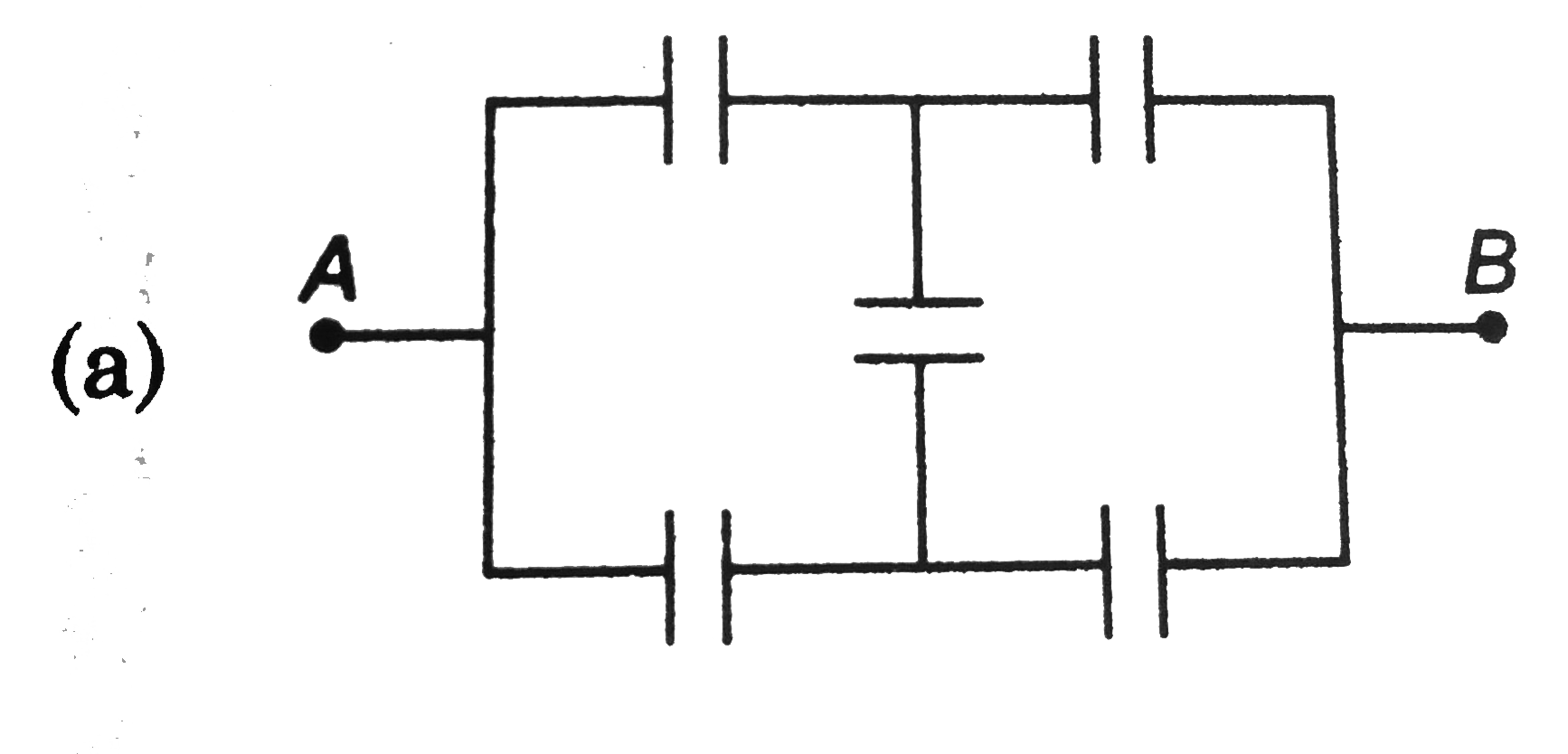

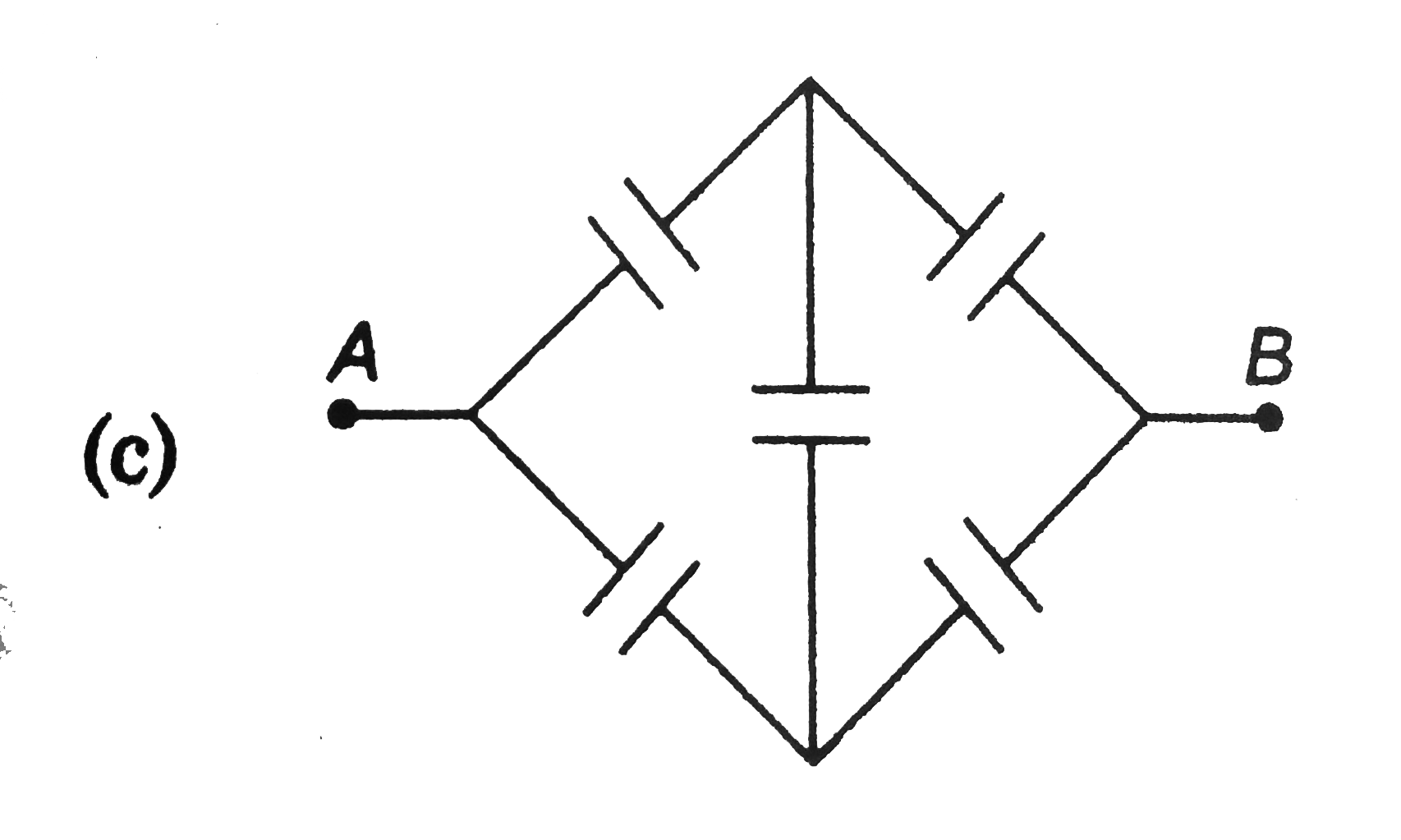
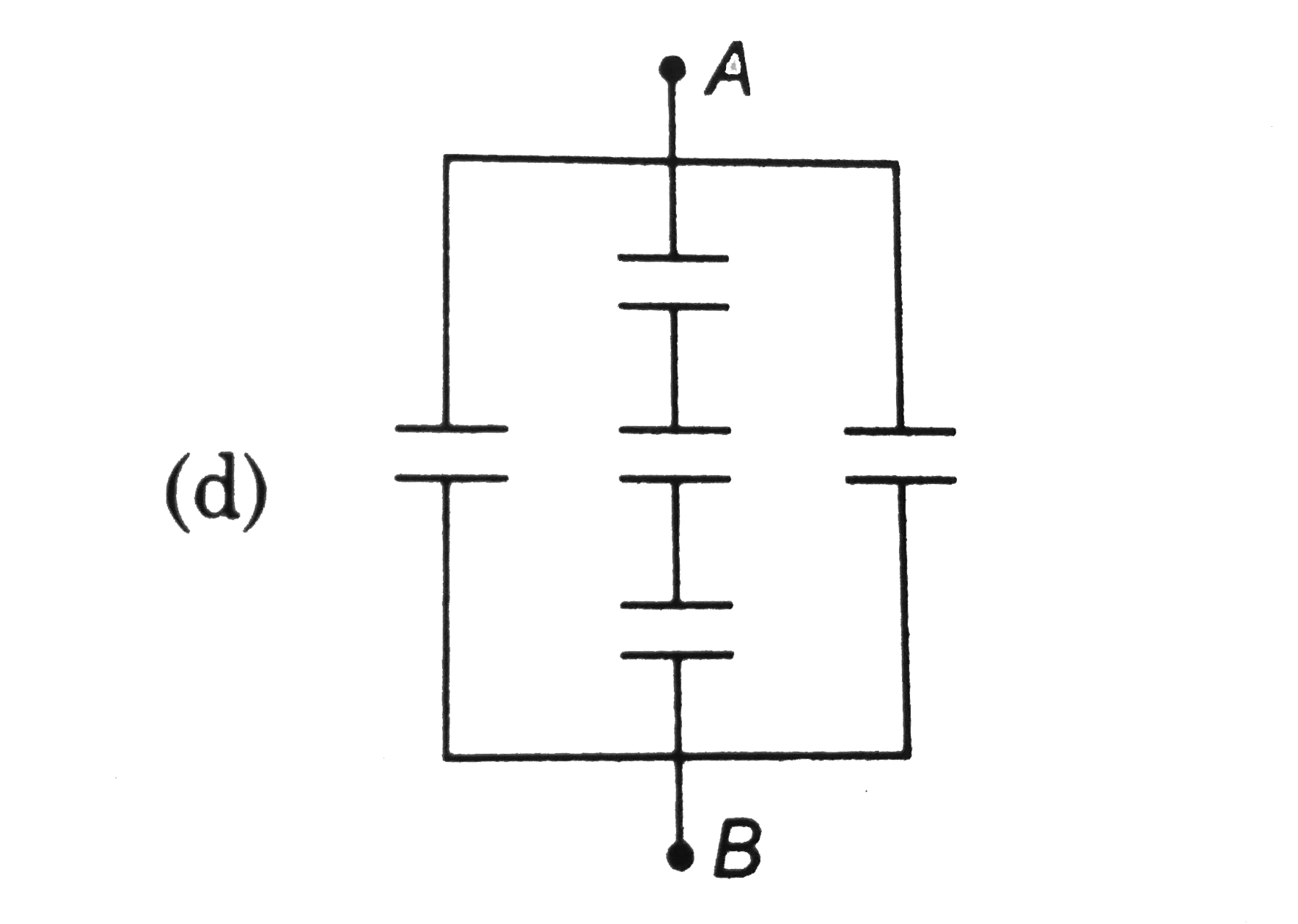
The correct Answer is:D
To solve the problem of identifying which of the four capacitor networks is different from the others, we will analyze each configuration step by step.
1. Understanding the Capacitor Configurations:
- We have four configurations of five identical capacitors. We need to determine which one is different based on their arrangement.
2. Identifying Wheatstone Bridge:
- A Wheatstone bridge is a specific arrangement of resistors (or capacitors in this case) that allows for the balancing of the circuit. If the bridge is balanced, no current flows through the bridge, and the capacitors can be simplified.
3. Analyzing the First Three Configurations (A, B, C):
- For the first three configurations (let's call them A, B, and C), we check if they form a Wheatstone bridge.
- If they do, we can simplify the circuit by ignoring the branch that does not affect the overall capacitance.
4. Calculating Capacitance for A, B, and C:
- Assume each capacitor has a capacitance value of C.
- In each configuration, we can group the capacitors into series and parallel combinations.
- For example, if two capacitors are in series, the equivalent capacitance Ceq is given by:
1Ceq=1C1+1C2
- If two capacitors are in parallel, the equivalent capacitance is:
Ceq=C1+C2
5. Finding the Equivalent Capacitance:
- For configurations A, B, and C, after simplification, we find that the net capacitance is the same (let's say it equals C).
6. Analyzing the Fourth Configuration (D):
- Now we check the fourth configuration (D) to see if it forms a Wheatstone bridge.
- If it does not form a Wheatstone bridge, the current will flow through the bridge, and the capacitors cannot be simplified in the same way.
7. Conclusion:
- Since configurations A, B, and C are identical and follow Wheatstone bridge balancing, while configuration D does not, we conclude that option D is the different one.
Final Answer:
The configuration that is different is option D.
---
- We have four configurations of five identical capacitors. We need to determine which one is different based on their arrangement.
- A Wheatstone bridge is a specific arrangement of resistors (or capacitors in this case) that allows for the balancing of the circuit. If the bridge is balanced, no current flows through the bridge, and the capacitors can be simplified.
- For the first three configurations (let's call them A, B, and C), we check if they form a Wheatstone bridge.
- If they do, we can simplify the circuit by ignoring the branch that does not affect the overall capacitance.
- Assume each capacitor has a capacitance value of C.
- In each configuration, we can group the capacitors into series and parallel combinations.
- For example, if two capacitors are in series, the equivalent capacitance Ceq is given by:
1Ceq=1C1+1C2
- If two capacitors are in parallel, the equivalent capacitance is:
Ceq=C1+C2
- For configurations A, B, and C, after simplification, we find that the net capacitance is the same (let's say it equals C).
- Now we check the fourth configuration (D) to see if it forms a Wheatstone bridge.
- If it does not form a Wheatstone bridge, the current will flow through the bridge, and the capacitors cannot be simplified in the same way.
- Since configurations A, B, and C are identical and follow Wheatstone bridge balancing, while configuration D does not, we conclude that option D is the different one.
The configuration that is different is option D.
Topper's Solved these Questions
- BOOK - DC PANDEY ENGLISHCHAPTER - CAPACITORSEXERCISE - OBJECTIVE_TYPE1videos
CAPACITORS
- BOOK - DC PANDEY ENGLISHCHAPTER - CAPACITORSEXERCISE - OBJECTIVE_TYPE1videos
CAPACITORS
- BOOK - DC PANDEY ENGLISHCHAPTER - ATOMSEXERCISE - MEDICAL ENTRANCES GALLERY42videos
ATOMS
- BOOK - DC PANDEY ENGLISHCHAPTER - COMMUNICATION SYSTEMEXERCISE - Subjective11videos
COMMUNICATION SYSTEM
Similar Questions
Mitosis is not having the one of the character out of the four given below :
View SolutionMeiosis is not having the one of the character out of the four given below-
View SolutionA network of four 20 μF capacitors is connected to a 600 V supply as shoen in the figure.
The equivalent capacitance of the network is
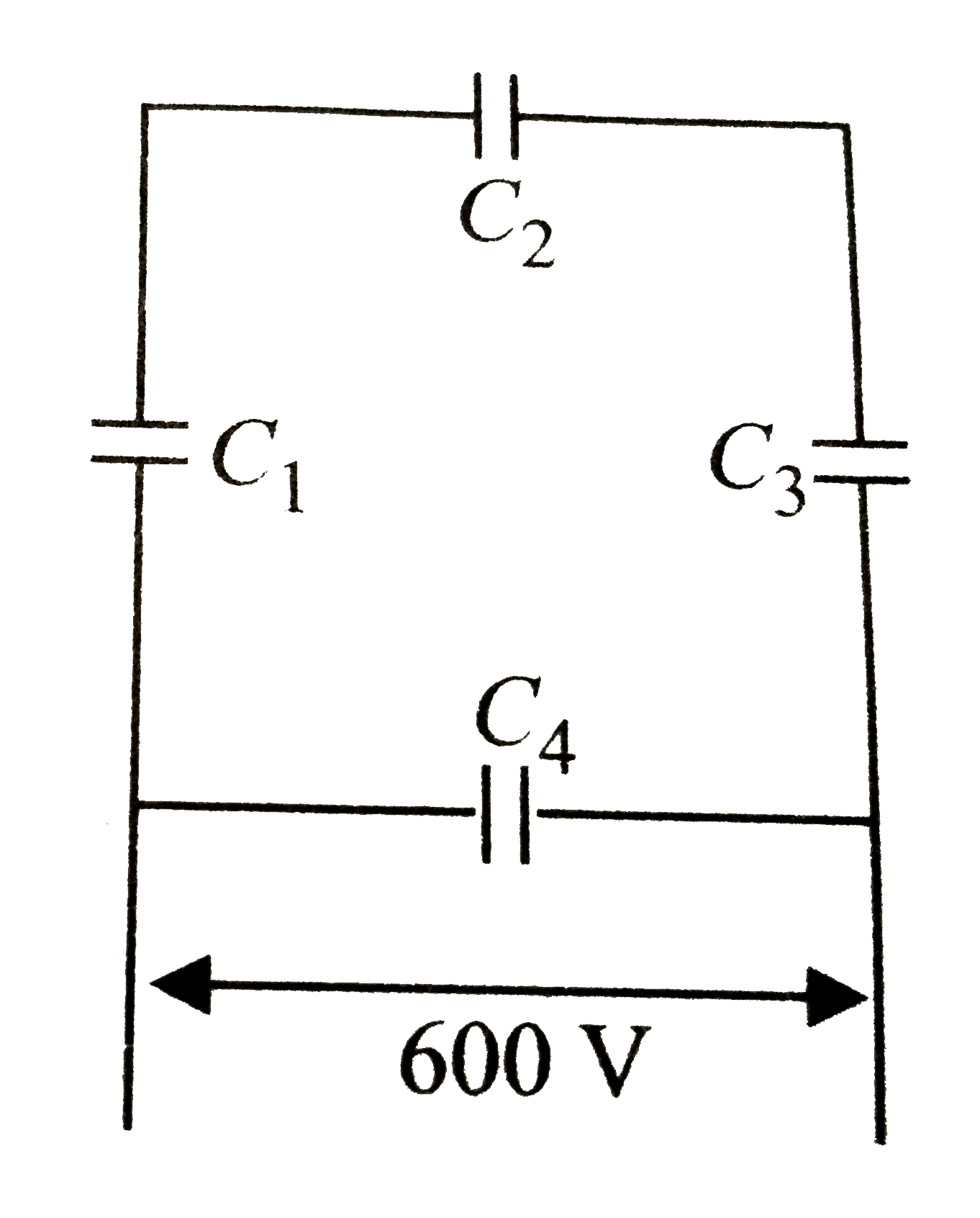 View Solution
View Solutionshown a network of four resistance and three batteries
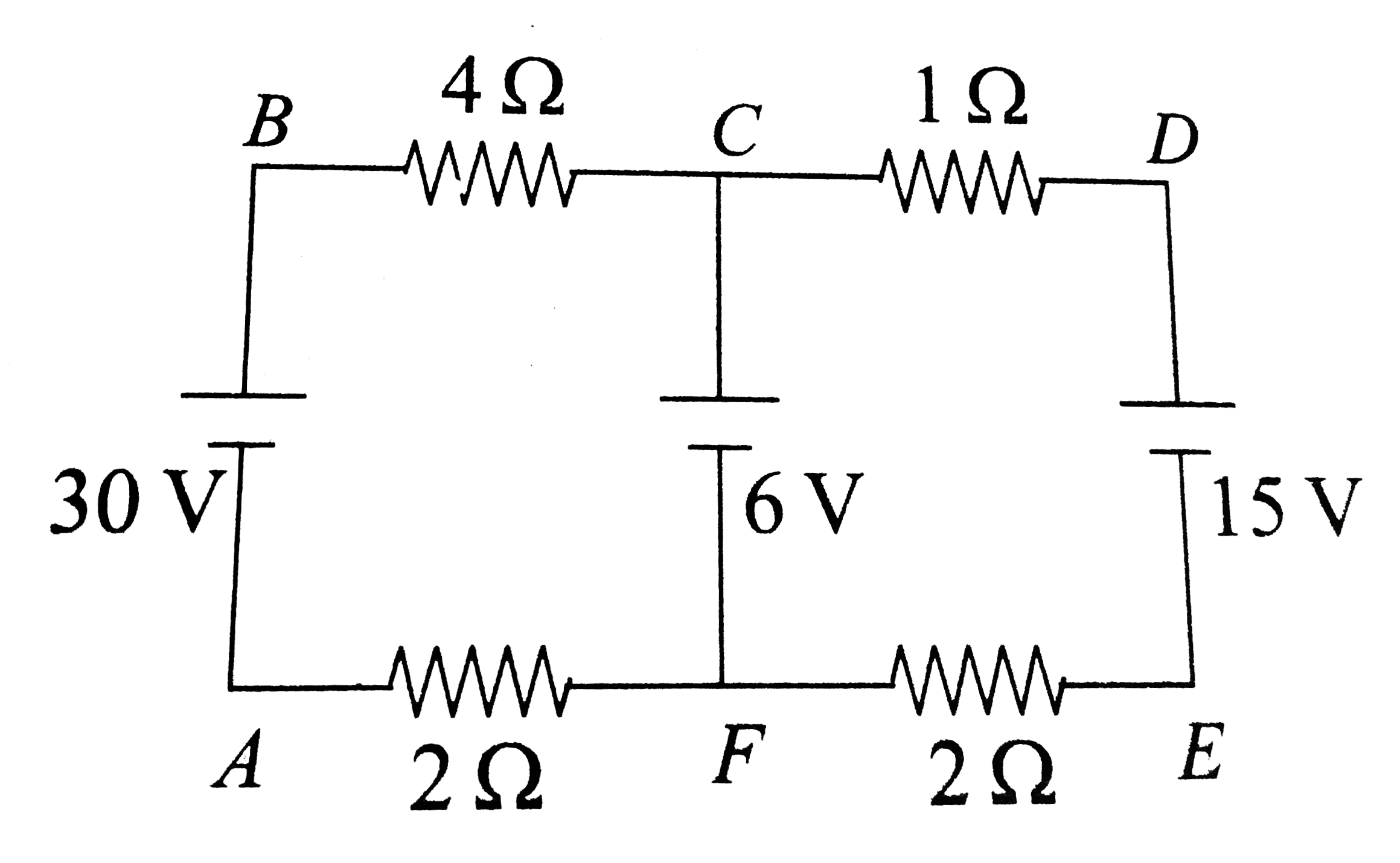
Mark the incorrect statement.View SolutionFour capacitors are connected as shown in figuere to a 30V battery. The potential difference between points a and b
 View Solution
View SolutionWhat is the number of ways of choosing 4 cards from a pack of 52 playing cards? In how many of these(i) four cards are of the same suit,(ii) four cards belong to four different suits,(iii) are face cards,(iv) two are red cards and two are black cards,(v) cards are of the same colour?
View SolutionA point charge is positioned at the centre of the base of a square pyramid as shown. The flux through one of the four identical upper faces of the pyramid is, qPε0 then P is
 View Solution
View Solutionshown a network of four resistance and three batteries

Choose the correct alternative.View SolutionFind the total number of ways of answering five objective type questions, each question having four choices
View SolutionA bar magnet of magnetic moment M is cut into four identical parts as shown in figure, then magnetic moment of each part is
_PHY_E06_282_Q01.png) View Solution
View Solution
